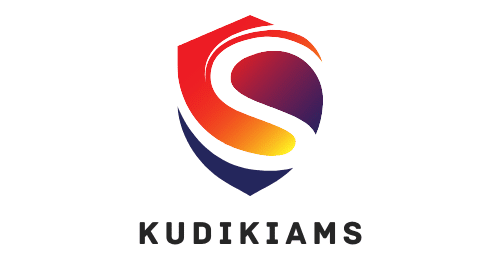What’s the Best Way to Use Video Feedback for Skill Development in Aspiring Professional Snooker Players?

In the dynamic world of sports, coaching is vital for the development of any athlete. The realm of snooker game is no different. The utilization of video feedback has emerged as an important tool in the arsenal of many snooker coaches. In this article, we will explore the best ways of leveraging video feedback for skill improvement in aspiring professional snooker players.
The Importance of Video Feedback in Snooker Practice
Snooker is a game of strategy, where precise control over the cue and ball is imperative. The difference between winning and losing can often come down to a single shot. This is where video feedback comes into play.
A lire également : How Can Parachute Running Improve Sprint Speed for Football Wide Receivers?
Video feedback assists players and coaches in analyzing and refining the player’s performance. It allows players to visually understand their weaknesses, strengths, and the areas they need to improve on. Coaches can use this information to guide players, offering targeted advice based on actual gameplay, rather than relying entirely on instinct or memory.
Video feedback is particularly useful in snooker, given the importance of technique and precision in the sport. It’s one thing to hear a coach describe a mistake or suggest an adjustment. It’s another thing entirely to see it for yourself, to watch the trajectory of a poorly hit ball, or to observe the subtle change in your stance that could make all the difference.
Avez-vous vu cela : What’s the Potential of Gene Editing for Enhancing Muscle Strength in Olympic Weightlifters?
Using Video Feedback for Skill Development in Snooker
When it comes to using video feedback for skill development in snooker, it’s important to adopt a systematic and professional approach. Players should make it a regular part of their training routine. The timing of the feedback is also crucial. It’s generally more effective immediately or soon after the practice session.
One approach that has proven beneficial is known as the ‘DOI’ approach – Detect, Observe, and Improve. The player or coach first detects a potential issue or area for improvement. They then observe this in action, watching the video footage to gain a clear understanding of what’s going wrong. Then, they work on strategies to improve this aspect of the player’s game.
Another important aspect of video feedback is the analysis of successful shots. Analyzing these successful shots can help players understand what they did right and attempt to replicate this success in future games.
The Role of Coaches in Video Feedback Training
Coaches play a pivotal role in the effective usage of video feedback. They have the expertise to identify key areas for improvement and can guide players through the process of reviewing and learning from their performance.
A good coach will use video feedback not just to point out errors, but to reinforce positive behaviors and successful strategies. They will work with players to create a dialogue around the video, rather than simply dictating their own observations. This collaborative approach promotes deeper learning and player engagement.
Coaching should also be individualized. Every player has a unique playing style and may need different types of feedback. A successful coach will adapt their methods to suit the individual needs of each player, ensuring that the feedback is relevant and useful.
Silver Lining – Continuous Learning and Improvement
Remember, the aim of video feedback in snooker practice isn’t to highlight mistakes for the sake of it. The goal is to promote continuous learning and improvement, with an ultimate objective of enhancing performance during the actual game.
For aspiring professional snooker players, video feedback can be a silver lining. It provides an opportunity to learn from mistakes, improve technique, and build confidence. Incorporating video feedback into training can help snooker players refine their skills, understand the intricacies of the game, and progress in their journey to become professional players.
The road to becoming a professional snooker player can be challenging. Success requires time, effort, and a commitment to continuous learning. By utilizing video feedback effectively, players can accelerate their skill development and enhance their game performance. Video feedback, when used correctly, can be a game changer in the world of snooker.
Remember, the key to progress lies in not just playing the game, but in studying it, learning from it, and constantly striving to improve. Video feedback is an invaluable tool in this process, providing a clear, objective view of performance and offering insights that can drive significant improvement.
Incorporating Video Feedback in Decision Making and Ball Control
In the snooker world, decision making and ball control are vital skills that separate top players like Ronnie Sullivan from the rest. Video feedback can enhance these skills significantly in aspiring professional snooker players.
Video feedback can be used to evaluate a player’s decision-making abilities by reviewing the choices made during the crucial moments of a game. It helps players understand whether their decisions were fruitful or not. In instances where a decision led to an unfavorable outcome, the player can review the footage and identify alternative strategies that could have been deployed. Thus, video feedback can significantly enhance the decision-making skills of a player.
On the other hand, ball control is a technical skill that requires a high level of precision and expertise. This skill involves controlling the cue ball and the object ball to achieve the desired results. Video feedback can help a player assess their ball control skills by providing a visual representation of their control over the cue ball and object ball.
Players can analyze their shots in slow motion, observing the speed, angle, and contact point of the cue ball and the object ball. They can then adjust their techniques accordingly to improve their ball control. Video feedback, in this context, serves as the bridge between theoretical knowledge and practical application.
Coaches can also use video feedback to guide players on how to enhance their decision-making abilities and ball control skills. They can follow the ‘DOI’ approach and create a tailored training plan addressing these aspects.
Engagement of AZB Silver and Gold Members in Video Feedback
The members of the snooker community, such as the AZB Silver and Playpoolbetter Gold members, can play a significant role in the promotion of video feedback. These members, who are usually high-level players or coaches, can guide aspiring professional snooker players by sharing their experiences and insights on using video feedback effectively.
These members can create interactive platforms where players can share their videos, receive feedback, and engage in constructive dialogue. They can encourage players to add a comment, view add, comment view, and report post to ensure an enriching and learning-focused discussion.
The click expand feature can be used to provide detailed feedback, while the followers report can help in keeping track of the progress of the players. The engagement of AZB Silver and Gold members can thus create a supportive environment where players can learn, adapt, and grow.
In Conclusion – Embrace the Power of Video Feedback
The journey to becoming a professional snooker player is challenging, but rewarding. It requires commitment, dedication, and a relentless pursuit of mastery. One of the most powerful tools in this journey is video feedback.
For aspiring professional snooker players, becoming a silver member of the game isn’t just about playing; it’s about analyzing, learning, and improving continuously. Video feedback presents opportunities for players to understand their game in depth, identify their strengths and weaknesses, and take effective steps towards improvement.
With the help of coaches and the wider snooker community, including the AZB silver and Playpoolbetter Gold members, players can harness the full potential of this tool to elevate their performance. Embracing video feedback can lead to significant enhancements in skills such as decision making and ball control, ultimately guiding players onto the path of becoming high-level, professional snooker players.
Remember, the future of snooker lies not just in the hands of the players, but also in the power of video feedback.
